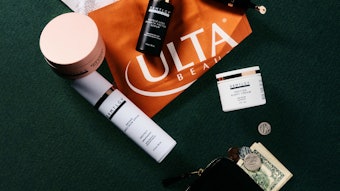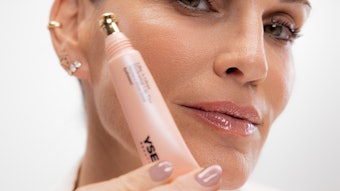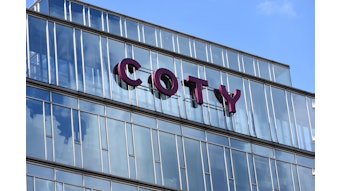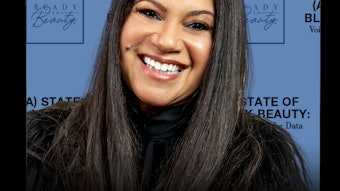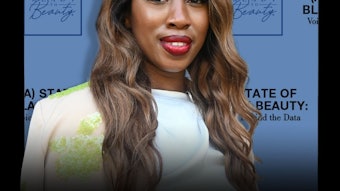- Consumers have opportunities to discover new beauty brands and products at every turn, so you have to create real reasons for them to stay loyal to your brand.
- With the amount of data brands and companies are now able to capture about their consumers, it is imperative loyalty initiatives and programs are personalized for consumers.
- Consumers hold four currencies they can dedicate to a brand: Spend, Talk, Engage and Prefer. Referred to as STEP, each action demonstrates the multiple dimensions of loyalty at a very personal level. Understanding and utilizing these currencies are true ways beauty brands can get ahead.
In a beauty market that grows more competitive by the day, the decline of consumer loyalty is unwelcome news. Ernst & Young reports brand loyalty is plummeting, and only 25% of consumers say brand loyalty affects their buying behavior. Discovering alternative products from friends or bloggers, as well as enticing offers from an ever-growing list of new brands, is easier than ever. Social sharing and growing use of mobile technologies make loyalty a moving target.
But while consumer behavior might be changing, consumer needs have not. They still crave brands and retailers that make them feel smart and deliver consistency. This represents a huge opportunity for brands. By capitalizing on innovation in data-driven consumer centricity, beauty marketers can gain unprecedented loyalty from consumers—by demonstrating unprecedented loyalty to consumers.
The Myth of the Loyalty Ladder
Marketers often talk about taking consumers up the loyalty ladder from brand awareness to preference, loyalty and advocacy. If loyalty is just a series of steps building to stronger love, why have so few companies managed to hold on to their customers? Loyalty doesn’t work this way.
Many marketers often think they’ve done enough to capture consumers’ affections. That’s why customer retention rates in the 60–65% range are considered good in some categories. Let’s be clear: It’s unacceptable to lose four of every 10 customers because they don’t follow your rigid, pre-determined path to loyalty.
This Time, It’s Personal
Just as every consumer is unique, every path to purchase is a multifaceted and multidirectional journey, influenced by many factors. Today, these include a combination of traditional media, advertising, store visits, social media, direct marketing, websites, mobile apps, word of mouth and habit. Some journeys may be direct and the result of a particular shopping mission, or they may be more spontaneous and inspired by several influences.
Brands need to consider all the potential actions a consumer takes when engaging in the beauty category and with their brand, and understand what will have the greatest impact on loyalty.
Marketers play a vital role in these influences. By developing a deeper understanding of consumers’ wants and needs, every aspect of the consumer experience can become much more personalized. Personalization makes brands more human and relevant. Further, personalization helps win greater consumer attention. In today’s economy of distraction, attention is highly prized and hugely valuable in building loyalty.
The Loyalty Program Crutch
Loyalty goes beyond a program. It’s an approach to doing business that places value in understanding what consumers value, delivering this consistently and prioritizing loyal customers—the engine of growth for brands.
Data analysis shows a loyal consumer can be worth between 12 and 20 times the value of a non-loyal consumer. Taking care of your best consumers sounds simple, but most companies try to grow business through acquisition. Without a commitment to learning about the consumer, it’s impossible to know what resonates best with loyal customers and encourage them to keep coming back. In categories like beauty, where there is a greater capacity to connect with consumers, loyal customers can often be the best people to tell you straight what works and how to give them more of what they want.
However, research often misses the drivers behind loyalty, because people aren’t always aware of why they do what they do. Shopping data can illuminate what consumers value. This includes what drove the decision, giving clues to the rewards where they might find value. Combining data sources from influences throughout the customer journey can provide a full picture understanding of what matters to them. When you consider how much they reveal about themselves in browsing and purchasing behaviors, it’s offensive not to use that information to improve their experience.
The Devil is In the Details
There is often a wide gap between what a beauty brand promises to deliver and what consumers experience. The pump dispenser that breaks after a month, the bronzer-smeared sampling station littered with dirty tissues, the snooty sales associate—these all leave negative impressions. An accumulation of failures large and small, usually totally unnoticed by the brand, destroys loyalty.
Measuring Loyalty by STEPs
Purchases are only one output of loyalty. Looking solely at purchases gives a narrow view of the contribution consumers can make to a business. It’s not exploratory or descriptive of the underlying motivation. It also fails to explain why a consumer is loyal to a brand.
So broaden your perspective. Consumers hold four currencies they can dedicate to a brand: Spend, Talk, Engage and Prefer. Referred to as STEP, each action demonstrates the multiple dimensions of loyalty at a very personal level. For marketers, the value of STEP is that it can be measured.
Creating a Holistic Loyalty Strategy
Using the STEP model, loyalty planning becomes a strategic process involving the entire organization. The qualities you want the brand to represent are defined and translated company-wide. Every consumer touchpoint is managed toward the same vision.
The evaluation of consumer growth considers all they do. This enables significantly more personal loyalty-building programs. For example:
- High Spend customers with low Prefer scores might indicate there’s a problem that could cause them to leave the brand. Evaluating their Talk could uncover what’s driving that issue.
- High Engage customers with low Spend might be considering the brand but need a little extra incentive, in the form of a promotion, to make a purchase.
- High Talk and high Prefer customers might make outstanding brand advocates given the opportunity, even if their Spend isn’t the highest.
- High Spend and Engage but low Prefer customers might welcome the opportunity to provide feedback and a discussion about a concern.
Data-Driven, Customer Centric
For beauty marketers, building loyalty should no longer be a low-response, low-return initiative. Consumer data can drive every decision so communications are precisely targeted and completely customized for each consumer in real time. Every action can be captured and measured, and thus optimized for the consumer. With improved relevance comes higher responses, stronger sales and widespread advocacy.
If you put the consumer at the center of every business decision, you’re on your way to earning true loyalty. If you don’t, there are countless competitors in the beauty industry who will. Can you afford to resist?
Naomi Kasolowsky, global capability director for loyalty, leads the development of dunnhumby’s retail and brand loyalty vision and enabling capabilities. Before joining dunnhumby, Kasolowsky was senior director of consulting (EMEA) for Satmetrix, the co-developers of the Net Promoter measurement system. Kasolowsky also spent 12 years at Accenture, where she created Accenture’s global loyalty offerings and helped clients to better understand and measure the customer experience. Her actionable growth strategies across acquisition and retention levers have created large scale value for her clients.

